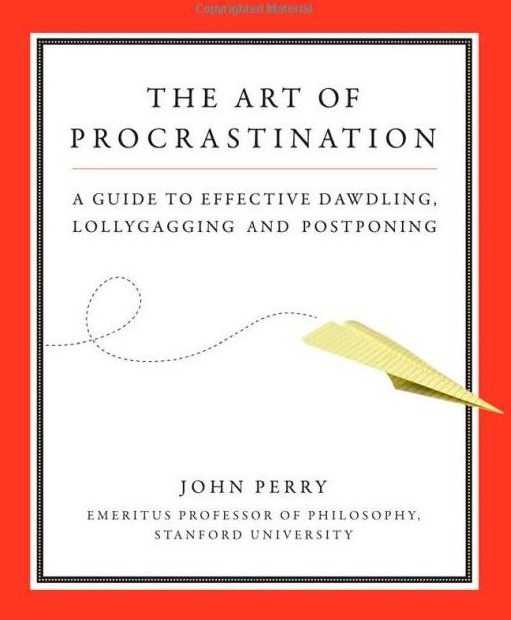
Do you do more when you have more to do?
When I procrastinate, I tend to buy books (and sometimes read books). It seemed to make sense that I read about procrastination! I learned that my instincts were true: “free time” doesn’t (usually) help me produce or create, and I have the most momentum when I have a lot on my plate because I can procrastinate on some things while being productive/creative!
The Art of Procrastination highlights the psychology of “structured procrastinators” and gets practical about it — it urges us not to be guilty about our procrastination, but rather to explore where/when/how it happens and leverage that instead!
The Art of Procrastination: A Guide to Effective Dawdling, Lollygagging, and Postponing
What is Structured Procrastination?
The key idea is that procrastinating does not mean doing absolutely nothing. Procrastinators seldom do absolutely nothing; they do marginally useful things, like gardening or sharpening pencils or making a diagram of how they will reorganize their files when they get around to it…
Structured procrastination means shaping the structure of the tasks one has to do in a way that exploits this fact. The list of tasks one has in mind will be ordered by importance. Tasks that seem most urgent and important are on top. But there are also worthwhile tasks to perform lower down on the list. Doing these tasks becomes a way of not doing the things higher up on the list. With this sort of appropriate task structure, the procrastinator becomes a useful citizen.
—
My key takeaway:
“Procrastinators often follow exactly the wrong tack. They try to minimise their commitments, assuming that if they have only a few things to do, they will quit procrastinating and get them done. But this goes contrary to the basic nature of the procrastinator and destroys his most important source of motivation. The few tasks on his list will be, by definition, the most important, and the only way to avoid doing them will be to do nothing. This is a way to become a couch potato, not an effective human being.”
This quote urges me to notice what I and my motivation, creativity, and productivity respond to — to test productivity strategies rather than to ruthlessly obey them. It also suggests that having one or more “really important” things lingering over my head may be why I can get ten other things done!
—
John Perry also brings attention to the various reasons for procrastination: among them, perfectionism. Leaving work until the last minute may allow us to let go of the need to be perfect, and to implement the ideas we’ve been “incubating” all along.
But when the deadline was near there was no longer time to do a perfect job. I had to just sit down and do an imperfect, but adequate, job. The fantasies of perfection are replaced by the fantasies of utter failure. So I finally got to work on it.
Finally, a useful tip: write your to-do list at night to sleep well, and include the “do-nots” on there. This is a good chance to keep yourself from getting derailed by the usual suspects, and to feel a burst of productive momentum in the morning!
Easy tasks at the beginning will help you get the feelings of accomplishments flowing. The list should include do-nots along with the dos. For example:
8. Pour a second cup of coffee.
9. Sit down at the desk, not at the couch.
10. Turn on the computer.
11. Do not check email.
12. Do not start surfing the web.
13. Open Word.
The Art of Procrastination: A Guide to Effective Dawdling, Lollygagging, and Postponing